Devblog #72 The Vistula spit
Hi everyone, it’s time for an update and here we are.
There are lots of things being developed in parallel, some things more interesting to write about than others; so we picked something that will be available in early access, and describe how we made it and what it will look like.
The struggle at the Vistula spit happened right at the end of the war, after a campaign that had seen unbelievably bitter fighting under extreme conditions, with staggering loss of life on both sides.
The Vistula spit and the Curonian spit are sandbank formations that are emblematic for the geography of the Baltic coast between Gdańsk (Danzig) and Klaipėda (Memel). As German units became cut off from the rest of the German Army (which was retreating towards the Oder during the Soviet offensive of january 1945) two pockets of resistance emerged around Königsberg (Kaliningrad) to the east and Danzig to the West, only linked by the Vistula spit after Soviet troops reached the Vistula lagoon at Heiligenbeil.
The situation became similar to the Courland pocket further east: the bulk of the Red Army was focused on breaking the Oder-Line and reaching Berlin, while efforts were made to contain and slowly destroy the German pockets. For the Germans “holding at all cost” had become the usual official mantra, and the evacuation by sea of civilians, wounded and valuable equipment didn’t mean the position would be abandoned. The evacuations took place mostly by ship and were supported by the Kriegsmarine. Many civilians and soldiers were evacuated in the extreme cold, and evacuations continued during spring. After the major ports of Königsberg and Danzig had been lost the only real alternatives for evacuation by ship were the small ports of Pillau and Hela.
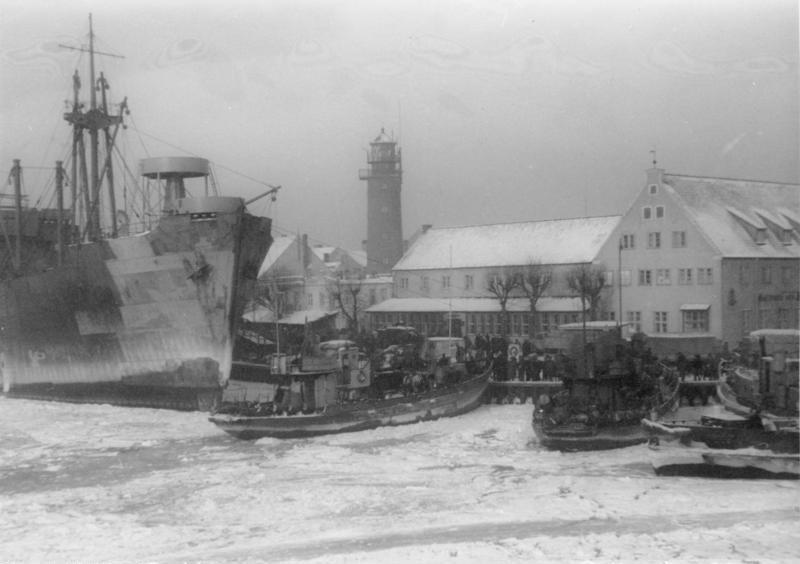 Civilians and soldiers line up to be evacuated in Pillau, 1945.
Civilians and soldiers line up to be evacuated in Pillau, 1945.
A tank ditch was dug across the peninsula north of Pillau to defend the city. What seem to be the remains of the defensive line can still be seen today; copy/ paste the coordinates (54.719827, 19.945084) into google maps to find it. The Lochstädt (Lochstedt) castle was the pivotal defense point of the German defenses north of Pillau in april 1945, it was defended by guns of the 18. Flak-Division and fell after heavy fighting on the 23rd of april. Pillau itself fell on the 25th of april.
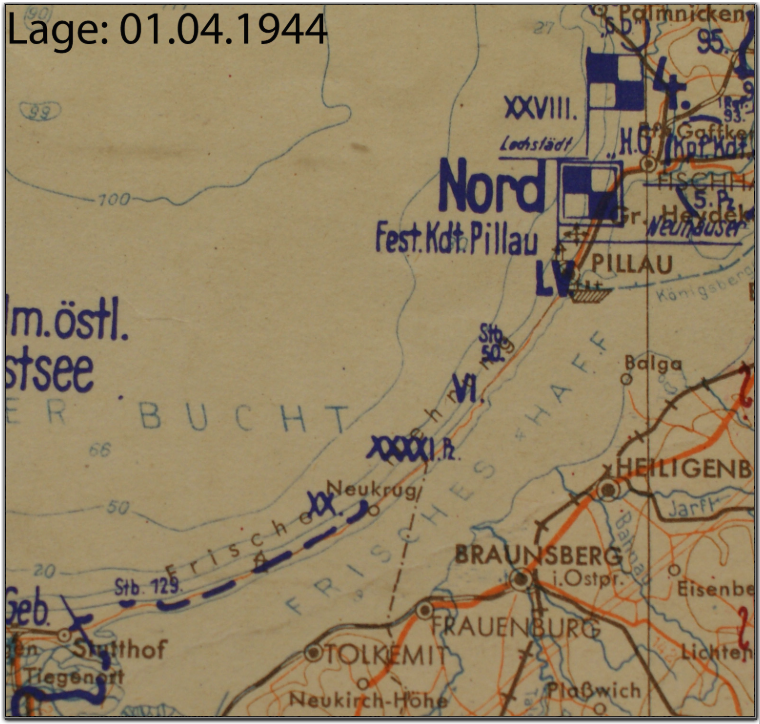 Part of a German situation map, indicating Pillau had a “fortress command”
Part of a German situation map, indicating Pillau had a “fortress command”
After the fall of Pillau, remnants of the German 4th Army - various surviving units and civilians - fled across the Pillau Strait.
Soviet troops of the 11th Guards Army pushed hard to pursue the fleeing Germans, harassing them with aircraft and building a pontoon to cross the strait. At the same time soviet troops used boats to land on both sides of the Spit to cut off retreating German troops. The main landing took place on the 27th April and was supposed to be a synchronized attack on both sides of the Spit, but the timing was off and Germans troops managed to push the Soviet troops back.
German infantry held blocking positions along the Spit, the northernmost part held by the 28. Jäger Division made up of remnants of the LV. Army Corps, while the remnants of the 5th Panzer Division and the “Grossdeutschland” Panzer Division served as mobile counterattack forces with the very few vehicles that were still operational.
Wounded soldiers, civilians from Pomerania and East Prussia and all sort of support units were now stuck on the Spit. The fighting continued until the 8th of May, the day the German troops on the Spit surrendered (2. Army on the nearby Hel-Peninsula surrendered only the next day).
The mission in Gates of Hell will be set in the aftermath of the fall of Pillau, during the gruelling last days of the war in Europe. Desperate German units trying to hold on and Soviet troops determined to end the war once and for all clash in the spring weather of 1945.
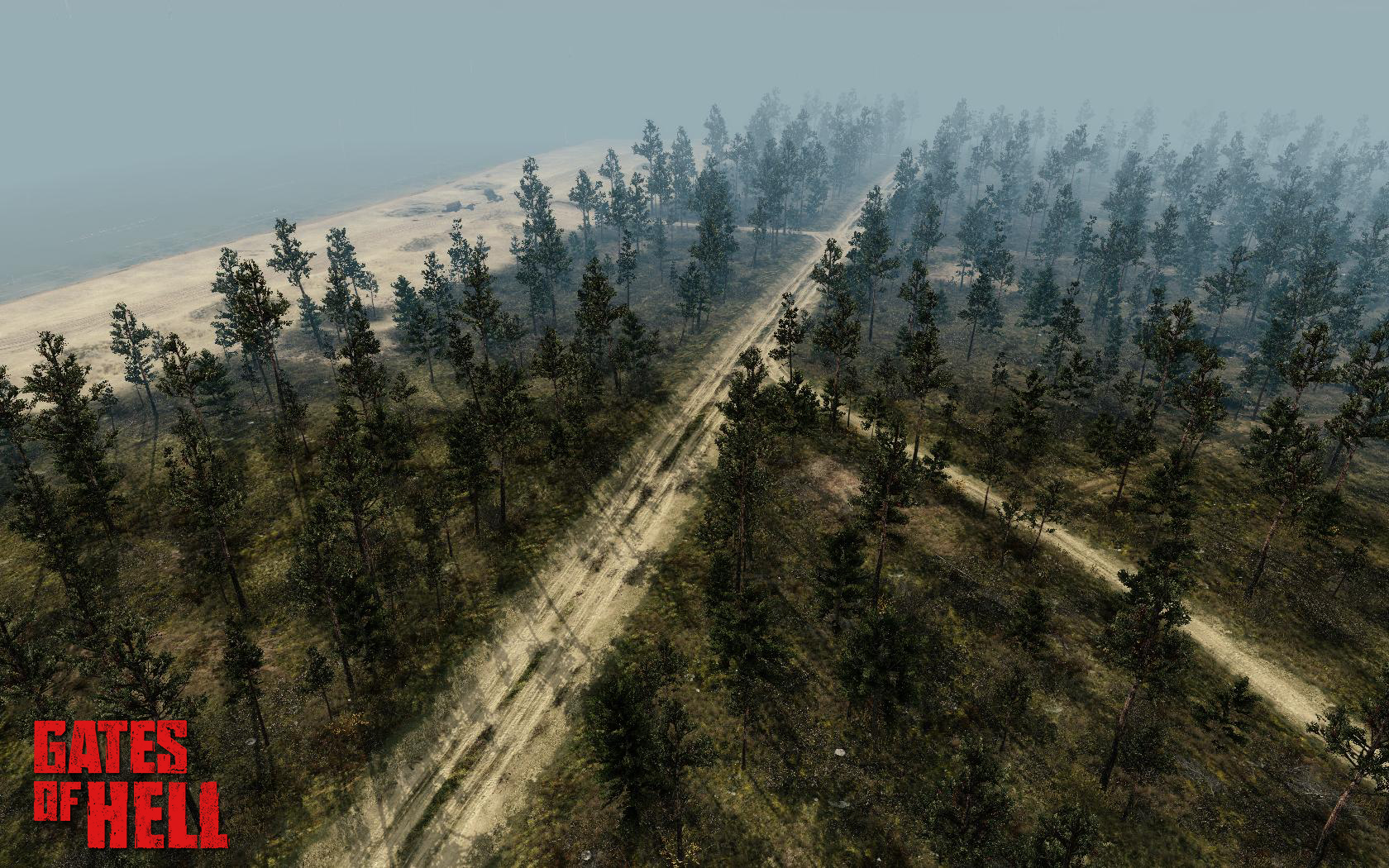 HD Link
HD Link
The geography of the area is unique and very different from the plains, cities and snowy battlefields of the Soviet Union. Instead the spit is heavily forested, giving great cover for infantry to hide from the ever watchful eyes of the Soviet air force. And of course sand, a lot of it (it’s coarse and rough and irritating obviously). This interesting mix of terrain is why we chose to look at this battle for Gates of Hell.
The mission we’re designing for the map will rely on these geographical features and the context of the last days of the war unfolding to provide an engaging fight for the player. The map can be roughly described as being composed of three distinctive areas that blend into each other: the shore on the baltic sea, the forest, and the dunes on the vistula lagoon shore.
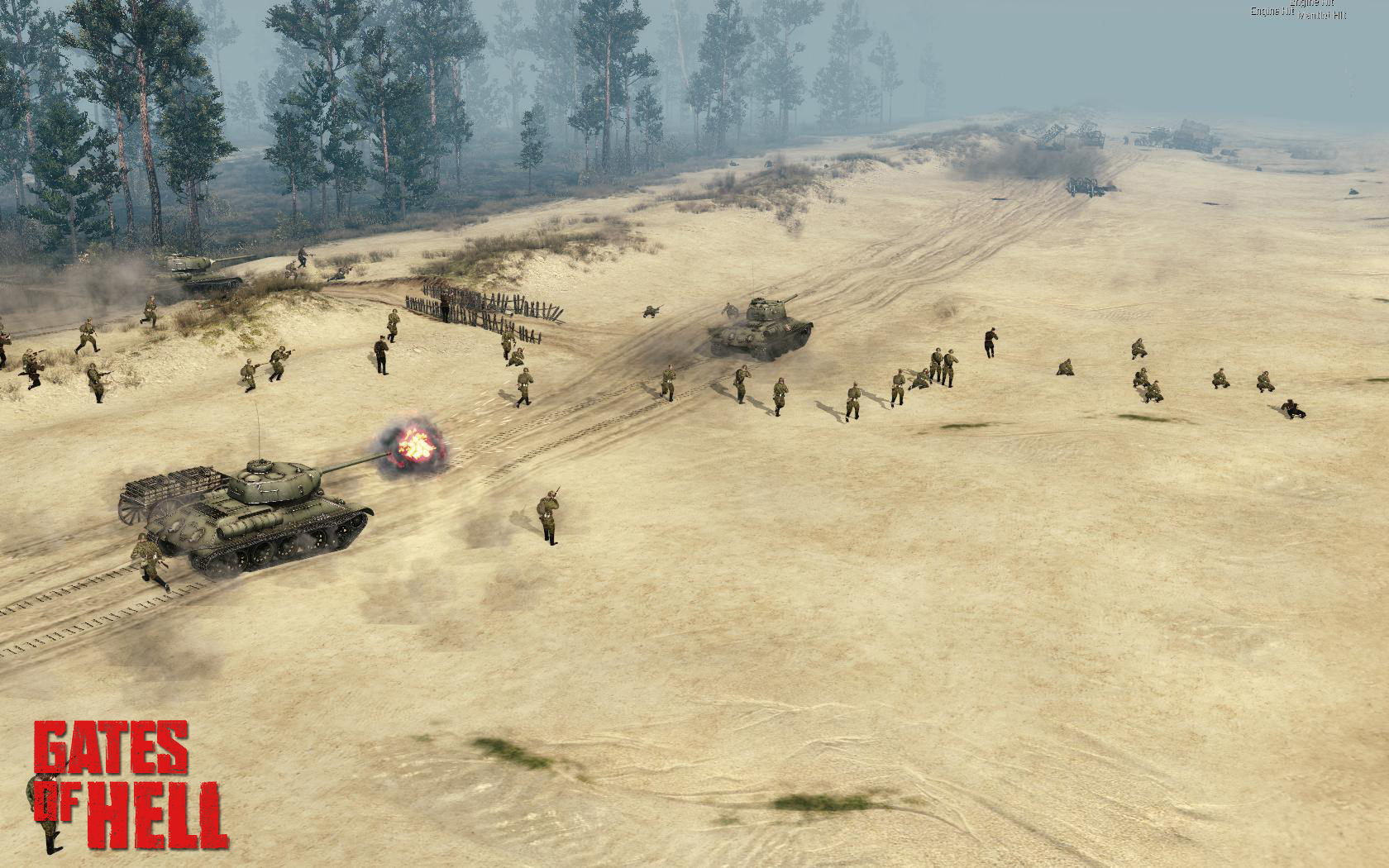 HD Link
HD Link
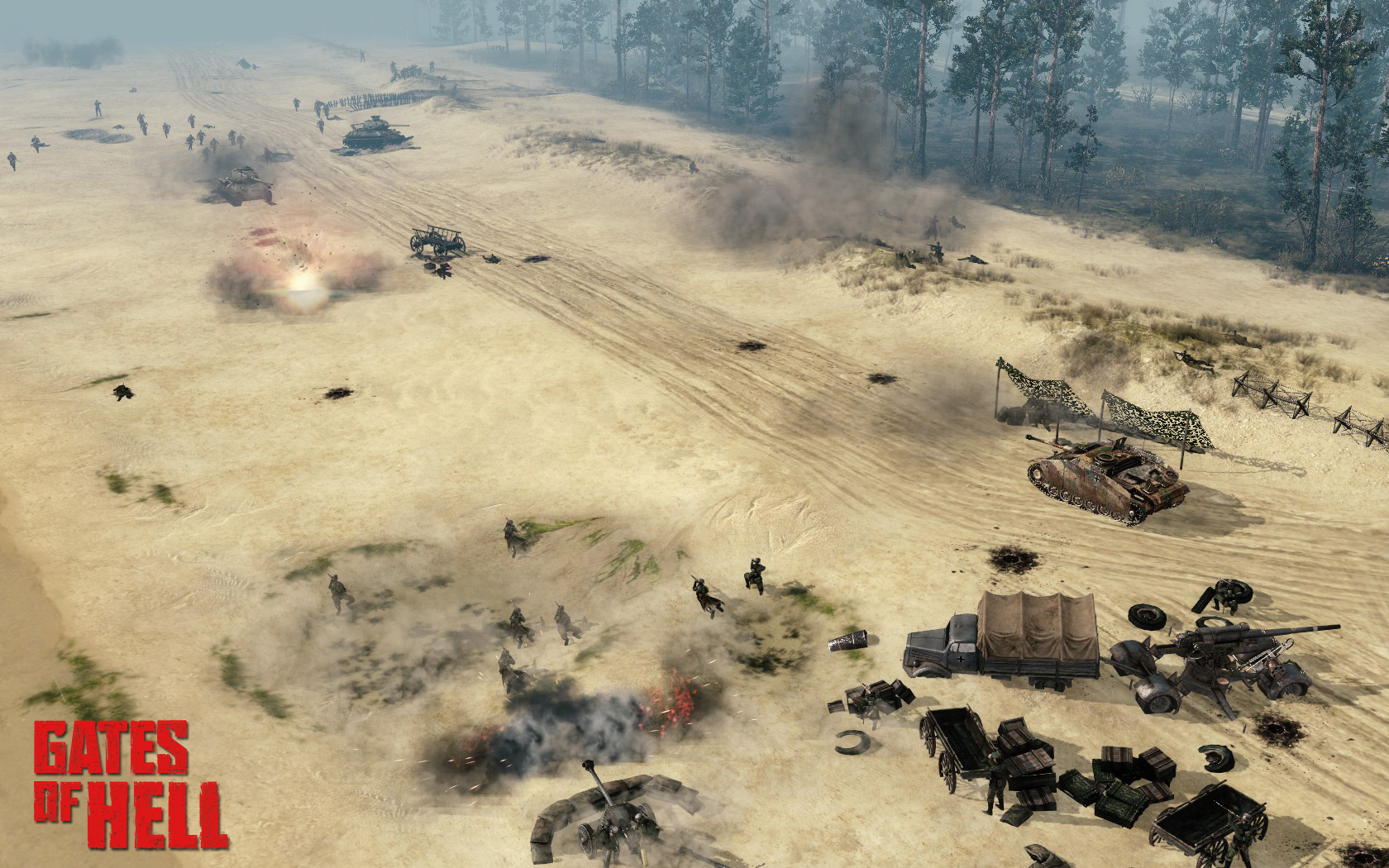 HD Link
HD Link
The baltic shoreline is thin and offers little cover. An improvised road follows the shoreline: the only north-south road on the spit was quickly congested by the military traffic and especially civilians but also military units used the sandy shore as an alternative road. This worked well during the winter when the sand was firm from the cold but when spring came around the loose sand became the last resting place for more than one German vehicle.
 HD Link
HD Link
Most of the spit is covered with pine forest. The sandy and mossy ground offers little resistance to tracks and so the only road going through the forest was of strategic importance. The almost straight road offers little cover, so beware if you want to rush your tank down that road, anti-tank crews and panzerfausts are lurking in the forest!
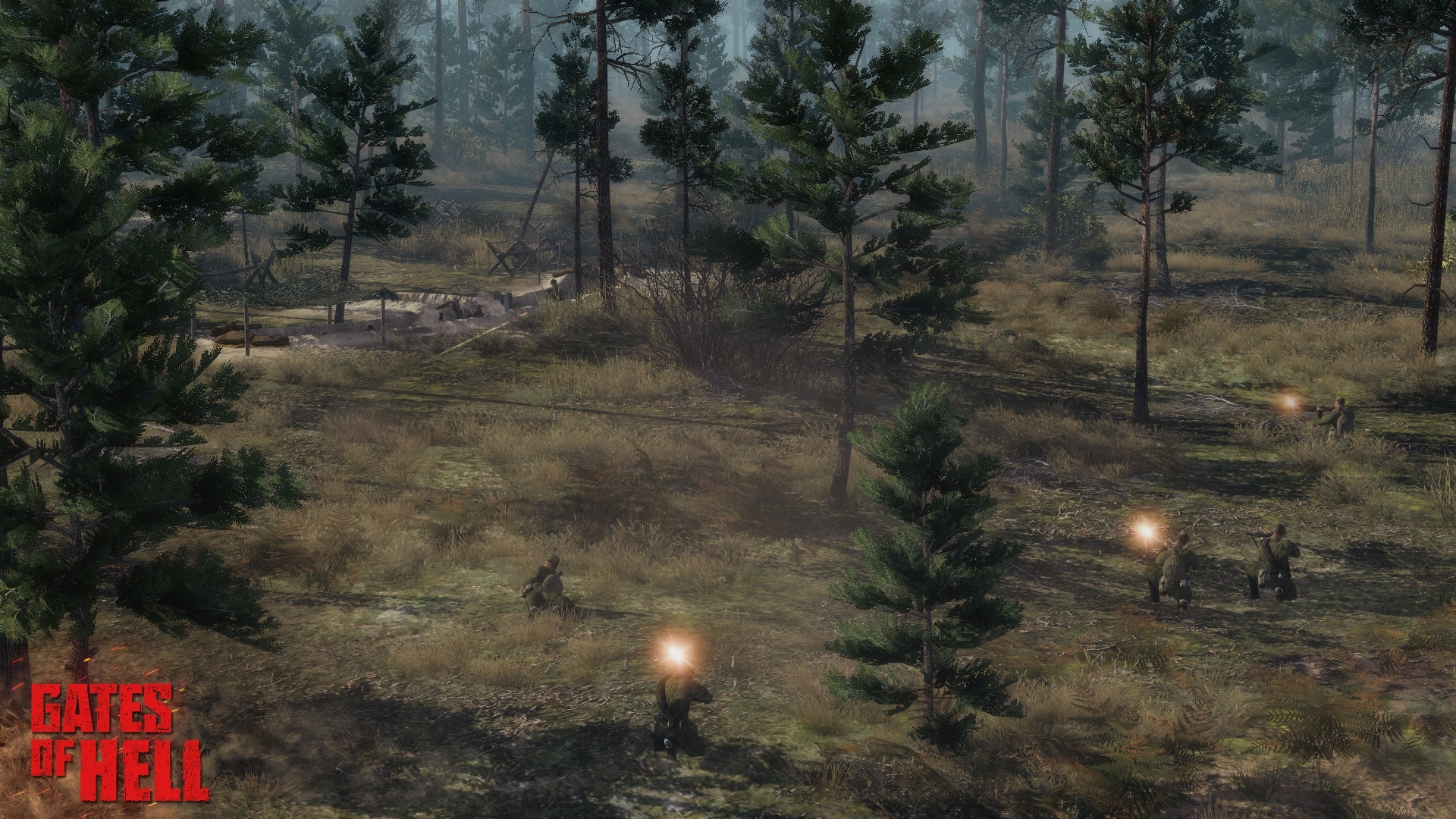 HD Link
HD Link
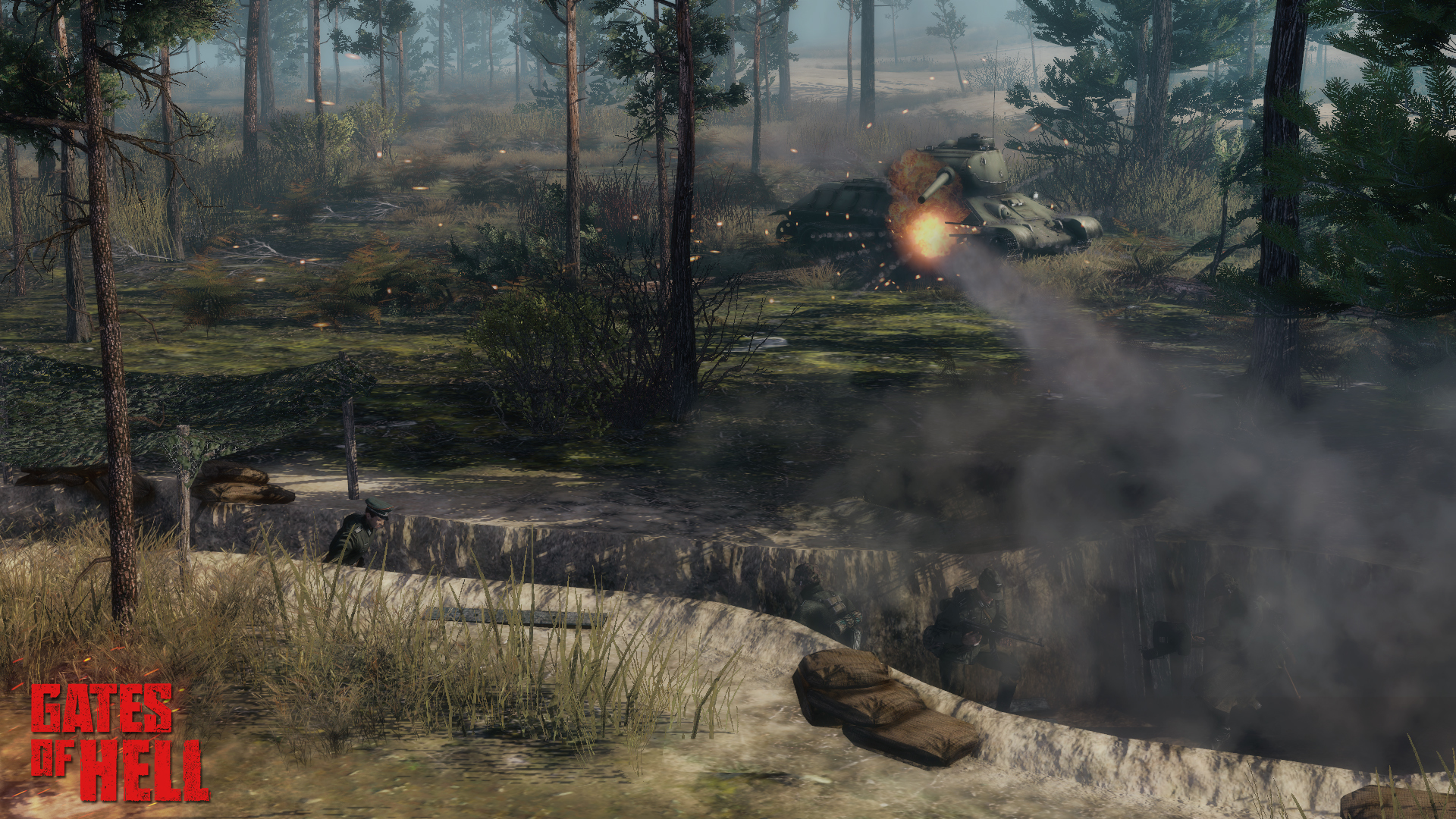 HD Link
HD Link
In the forest itself, German troops are seeking refuge from the constant Soviet air presence; here they can fortify. For Soviet soldiers it will be no simple task to drive them out, it will be a bloody forest fight.
 HD Link
HD Link
Then the forest and the dunes on the eastern side of the spit start to blend. Sand and greenery mix and create a playground for infantry ambushes. Flanking attacks to outmaneuver the fortified forest positions will have to come through here.
 HD Link
HD Link
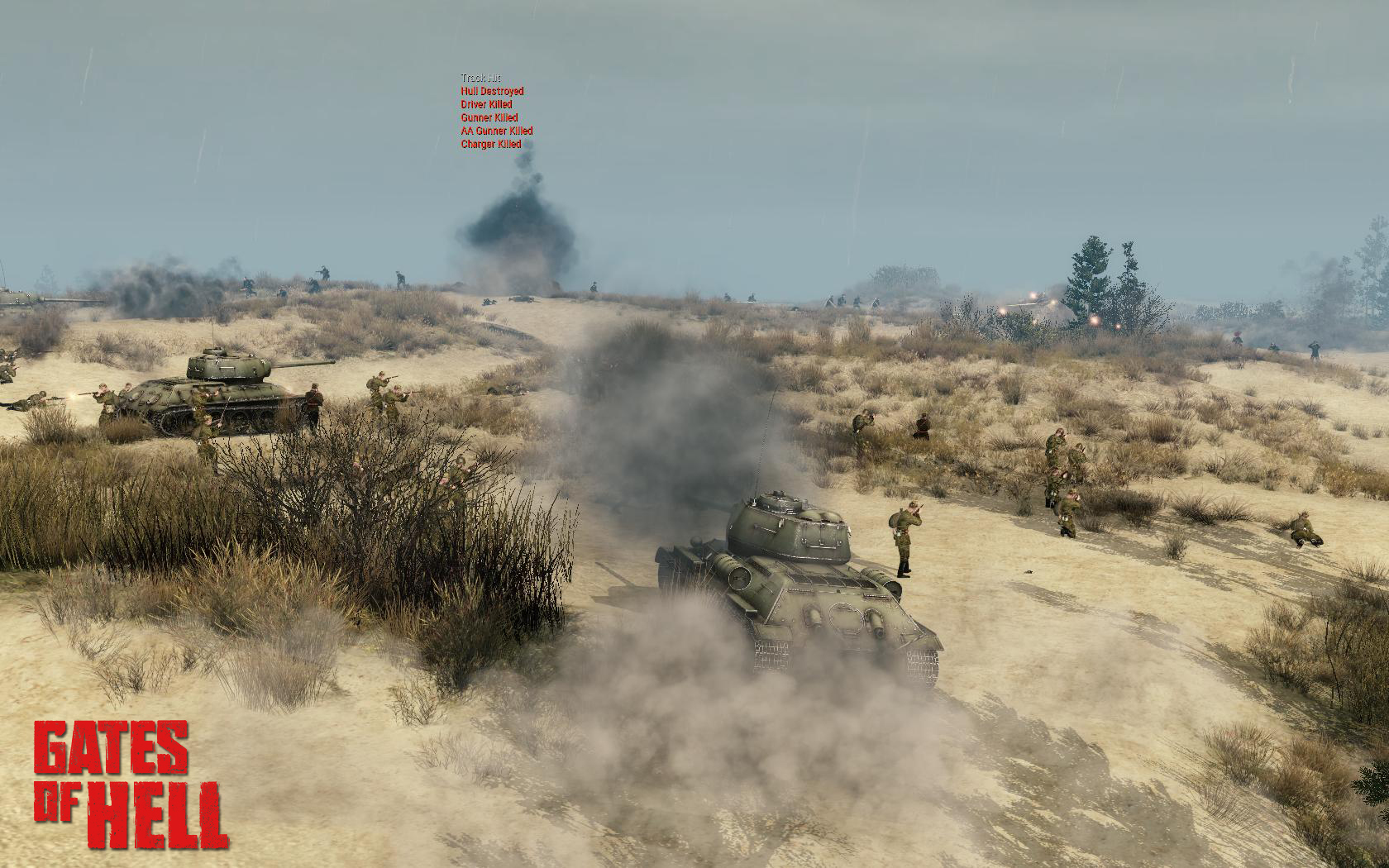 HD Link
HD Link
The dunes are open terrain, suited for long range fighting. Here tanks can deploy all their firepower, although the bumpy, sandy terrain doesn't make for an easy ride. The wavy dunes also provide great cover for sneaky infantry attacks. But beware, from above the mighty Soviet air force is always watching - and who knows what danger might come sailing in from the lagoon?
[List]
In the last weeks of the war, German light FLAK units were almost exclusively used in ground battles, for which they had to conserve ammunition; with the Luftwaffe already incapacitated, the VVS (Soviet air force) not only had complete mastery of the air, but the FLAK also stopped shooting at its aircraft.
The side streets of Pillau were littered with big piles of equipment in those last weeks. Soldiers were told to leave behind their guns, gas mask drums etc. to save space on the evacuating ships.
The Teutonic Order built the castle at Lochstädt. You can still visit the ruins of the castle today. In Pillau itself you can find a war museum as well.
We post regular WiP screenshots on Facebook:
https://www.facebook.com/gatesofhellgame/
[/List]
There are lots of things being developed in parallel, some things more interesting to write about than others; so we picked something that will be available in early access, and describe how we made it and what it will look like.
The battle
The struggle at the Vistula spit happened right at the end of the war, after a campaign that had seen unbelievably bitter fighting under extreme conditions, with staggering loss of life on both sides.
The Vistula spit and the Curonian spit are sandbank formations that are emblematic for the geography of the Baltic coast between Gdańsk (Danzig) and Klaipėda (Memel). As German units became cut off from the rest of the German Army (which was retreating towards the Oder during the Soviet offensive of january 1945) two pockets of resistance emerged around Königsberg (Kaliningrad) to the east and Danzig to the West, only linked by the Vistula spit after Soviet troops reached the Vistula lagoon at Heiligenbeil.
The situation became similar to the Courland pocket further east: the bulk of the Red Army was focused on breaking the Oder-Line and reaching Berlin, while efforts were made to contain and slowly destroy the German pockets. For the Germans “holding at all cost” had become the usual official mantra, and the evacuation by sea of civilians, wounded and valuable equipment didn’t mean the position would be abandoned. The evacuations took place mostly by ship and were supported by the Kriegsmarine. Many civilians and soldiers were evacuated in the extreme cold, and evacuations continued during spring. After the major ports of Königsberg and Danzig had been lost the only real alternatives for evacuation by ship were the small ports of Pillau and Hela.
 Civilians and soldiers line up to be evacuated in Pillau, 1945.
Civilians and soldiers line up to be evacuated in Pillau, 1945.A tank ditch was dug across the peninsula north of Pillau to defend the city. What seem to be the remains of the defensive line can still be seen today; copy/ paste the coordinates (54.719827, 19.945084) into google maps to find it. The Lochstädt (Lochstedt) castle was the pivotal defense point of the German defenses north of Pillau in april 1945, it was defended by guns of the 18. Flak-Division and fell after heavy fighting on the 23rd of april. Pillau itself fell on the 25th of april.
 Part of a German situation map, indicating Pillau had a “fortress command”
Part of a German situation map, indicating Pillau had a “fortress command”After the fall of Pillau, remnants of the German 4th Army - various surviving units and civilians - fled across the Pillau Strait.
Soviet troops of the 11th Guards Army pushed hard to pursue the fleeing Germans, harassing them with aircraft and building a pontoon to cross the strait. At the same time soviet troops used boats to land on both sides of the Spit to cut off retreating German troops. The main landing took place on the 27th April and was supposed to be a synchronized attack on both sides of the Spit, but the timing was off and Germans troops managed to push the Soviet troops back.
German infantry held blocking positions along the Spit, the northernmost part held by the 28. Jäger Division made up of remnants of the LV. Army Corps, while the remnants of the 5th Panzer Division and the “Grossdeutschland” Panzer Division served as mobile counterattack forces with the very few vehicles that were still operational.
Wounded soldiers, civilians from Pomerania and East Prussia and all sort of support units were now stuck on the Spit. The fighting continued until the 8th of May, the day the German troops on the Spit surrendered (2. Army on the nearby Hel-Peninsula surrendered only the next day).
The mission in Gates of Hell
The mission in Gates of Hell will be set in the aftermath of the fall of Pillau, during the gruelling last days of the war in Europe. Desperate German units trying to hold on and Soviet troops determined to end the war once and for all clash in the spring weather of 1945.
 HD Link
HD Link The geography of the area is unique and very different from the plains, cities and snowy battlefields of the Soviet Union. Instead the spit is heavily forested, giving great cover for infantry to hide from the ever watchful eyes of the Soviet air force. And of course sand, a lot of it (it’s coarse and rough and irritating obviously). This interesting mix of terrain is why we chose to look at this battle for Gates of Hell.
The mission we’re designing for the map will rely on these geographical features and the context of the last days of the war unfolding to provide an engaging fight for the player. The map can be roughly described as being composed of three distinctive areas that blend into each other: the shore on the baltic sea, the forest, and the dunes on the vistula lagoon shore.
 HD Link
HD Link  HD Link
HD Link The baltic shoreline is thin and offers little cover. An improvised road follows the shoreline: the only north-south road on the spit was quickly congested by the military traffic and especially civilians but also military units used the sandy shore as an alternative road. This worked well during the winter when the sand was firm from the cold but when spring came around the loose sand became the last resting place for more than one German vehicle.
 HD Link
HD Link Most of the spit is covered with pine forest. The sandy and mossy ground offers little resistance to tracks and so the only road going through the forest was of strategic importance. The almost straight road offers little cover, so beware if you want to rush your tank down that road, anti-tank crews and panzerfausts are lurking in the forest!
 HD Link
HD Link  HD Link
HD Link In the forest itself, German troops are seeking refuge from the constant Soviet air presence; here they can fortify. For Soviet soldiers it will be no simple task to drive them out, it will be a bloody forest fight.
 HD Link
HD Link Then the forest and the dunes on the eastern side of the spit start to blend. Sand and greenery mix and create a playground for infantry ambushes. Flanking attacks to outmaneuver the fortified forest positions will have to come through here.
 HD Link
HD Link  HD Link
HD Link The dunes are open terrain, suited for long range fighting. Here tanks can deploy all their firepower, although the bumpy, sandy terrain doesn't make for an easy ride. The wavy dunes also provide great cover for sneaky infantry attacks. But beware, from above the mighty Soviet air force is always watching - and who knows what danger might come sailing in from the lagoon?
[List]
Did you know?
Before and after the surrender, food was in short supply. Even though potatoes were available, these were not handed out immediately because they were needed for planting new crops. In the last weeks of the war, German light FLAK units were almost exclusively used in ground battles, for which they had to conserve ammunition; with the Luftwaffe already incapacitated, the VVS (Soviet air force) not only had complete mastery of the air, but the FLAK also stopped shooting at its aircraft.
The side streets of Pillau were littered with big piles of equipment in those last weeks. Soldiers were told to leave behind their guns, gas mask drums etc. to save space on the evacuating ships.
The Teutonic Order built the castle at Lochstädt. You can still visit the ruins of the castle today. In Pillau itself you can find a war museum as well.
We post regular WiP screenshots on Facebook:
https://www.facebook.com/gatesofhellgame/
[/List]